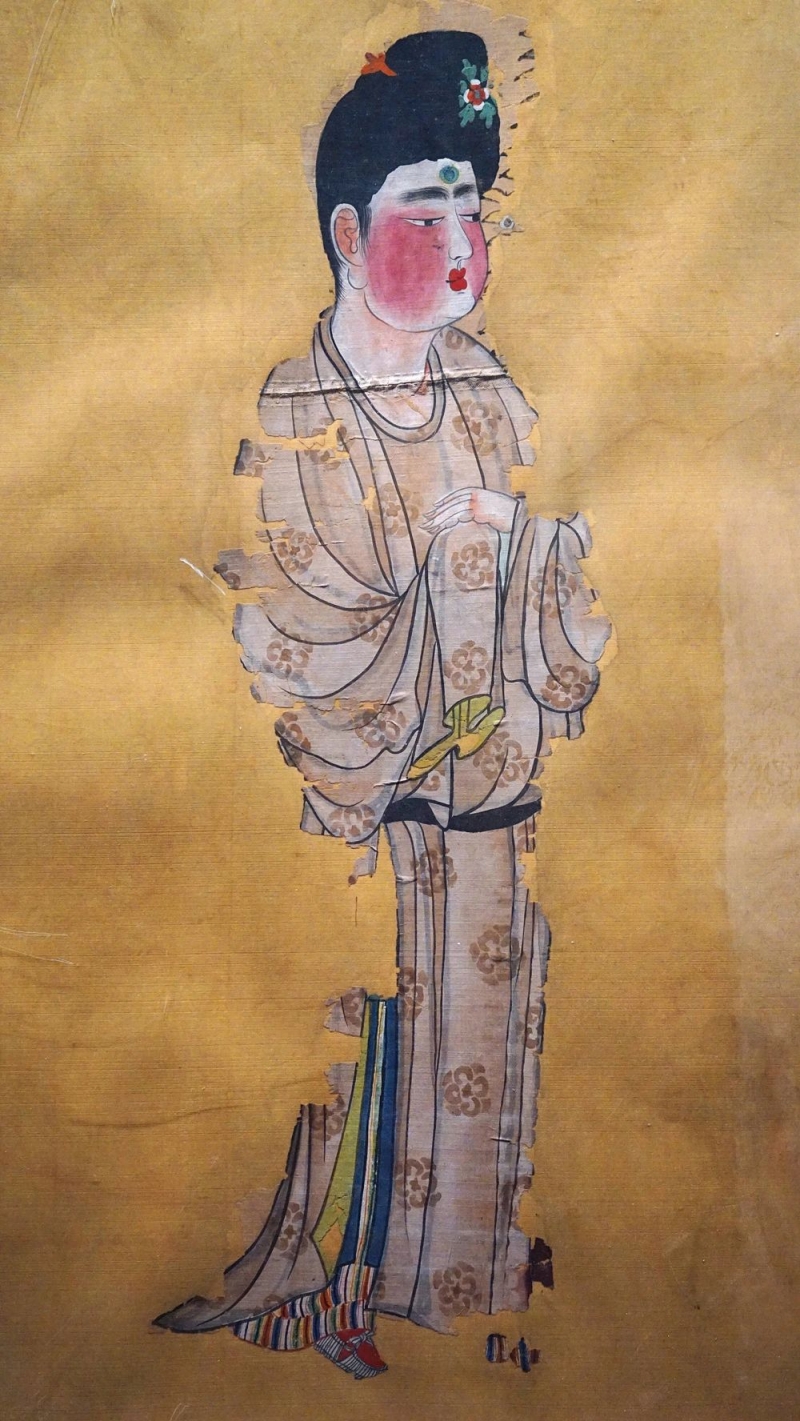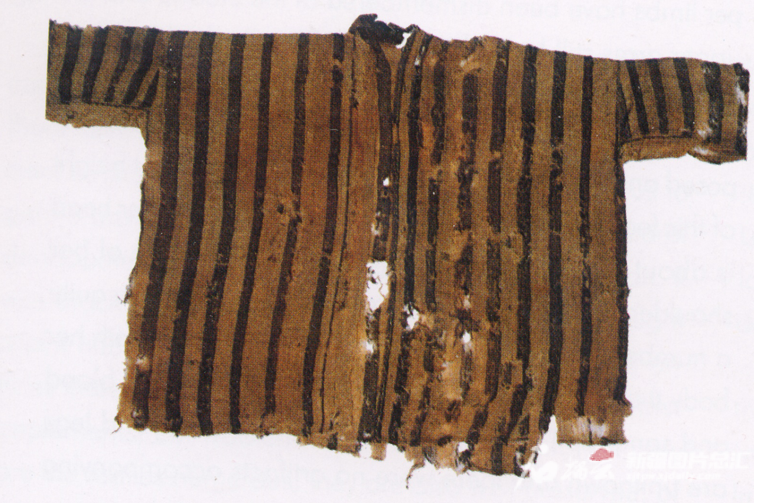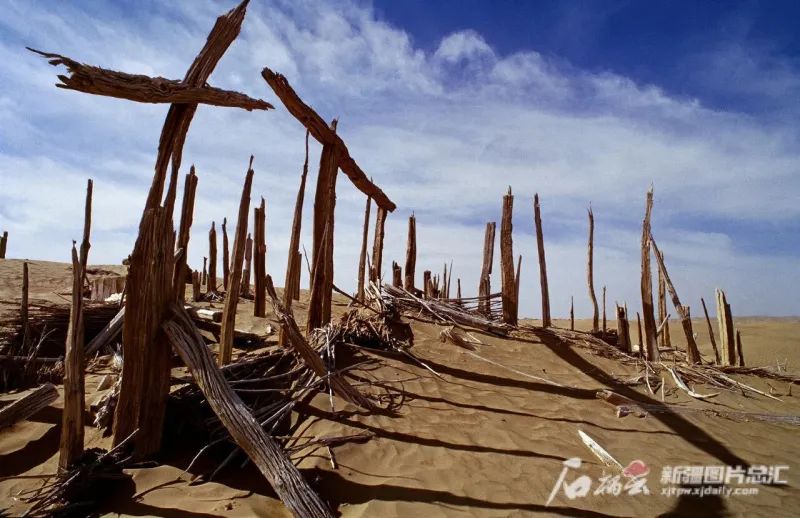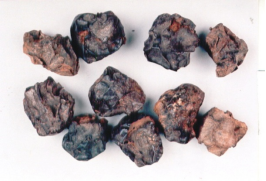At 12:13 on June 12, 2024, Xinjiang Uygur Autonomous Region Meteorological Service issued a yellow warning signal for high temperatures, which were expected to last from the afternoon of June 12 to the daytime of 17. Southern Xinjiang and most of the eastern Xinjiang would see high temperatures above 35 degrees Celsius, and the highest temperature in some areas would reach above 37 degrees Celsius. On such sweating days, people cool themselves in various ways, such as by eating ice cream, turning on the air conditioner, wearing sandals, etc.
Without electronic power, and other modern cooling means, how did people in Xinjiang in ancient times avoid summer heat?
Using fan

Photo shows a coarse-cloth fan unearthed in Zaghunluq Cemetery in Qiemo County, Bayingolin Mongolian Autonomous Prefecture, northwest China’s Xinjiang Uygur Autonomous Region.
A 2,800-year-old woolen fan was found in the Zaghunluq Cemetery in Qiemo County, Bayingolin Mongolian Autonomous Prefecture, northwest China’s Xinjiang Uygur Autonomous Region, which is the earliest fan found in Xinjiang so far. It is believed that the fan is a cultural relic of the Spring and Autumn Period (770-476 BC).
The fan is slightly rectangular in shape and is sewn with primary-color coarse cloth, which is 38.4 centimeters long and 29.4 centimeters wide. The fan handle made of rose willow is 50 centimeters long and one centimeter thick. The whole structure looks simple, with a plain handle, and a rough sector, but it features strong practicality and has been well preserved.

Photo shows a coarse-cloth fan unearthed at the Shanpula Cemetery in Luopu County, Hotan Prefecture, northwest China’s Xinjiang Uygur Autonomous Region.
Another coarse-cloth fan was also unearthed at the Shanpula Cemetery in Luopu County, Hotan Prefecture, Xinjiang. The handle is 52.1 centimeters long, and the rectangular fan surface is made of white plain coarse cloth, lined with felt and decorated with red plain coarse cloth. It is speculated that this rectangular fan may not be used by people to cool, but it is most likely to shade the sun.

Photo shows a round silk fan unearthed at the Astana Cemetery, Turpan City, northwest China’s Xinjiang Uygur Autonomous Region.

Photo shows a pair of bloomers unearthed in the Astana Cemetery, Turpan City,northwest China’s Xinjiang Uygur Autonomous Region (after restoration).

Photo shows a skirt unearthed in the Astana Cemetery in Turpan City, northwest China’s Xinjiang Uygur Autonomous Region (after restoration).
The Astana Cemetery unearthed a number of bloomers, skirts and other silk products, and their textures are very light and thin. In particular, it shows a rational design, leaving some space between the cloth and skins, which can make some air to cool down the sensible temperature. Experts speculate that because these clothes are made of silk and have no patterns, they should be worn in summer.
Nowadays, sandals are indispensable in hot summer.

Photo shows a pair of rush straw shoes unearthed at the Astana Cemetery.
A pair of rush straw shoes unearthed at the Astana Cemetery were introduced from the Central Plains, and were mostly worn by the people on summer days. The tips of the delicate shoes are slightly raised, and there are two bulges in bean shapes decorated on the tips’ left and right sides. Straw-made products are too decay-able to preserve. However, over a thousand years, this pair of rush straw shoes has been completely preserved, how miraculous.

Photo shows a pair of hessian shoes unearthed at the Astana Cemetery.
A pair of hemp shoes was also unearthed in the ancient tombs of Astana, with a thick sole woven with coarse hemp strings and an upper woven with fine ones. The shoes have a loose upper structure and a hollow waving structure on the middles, which look very similar to modern sandals. One of the ladies of the “Color-painted Two Court Ladies” unearthed at the Astana Cemetery also wears such shoes, which means that hemp shoes were very common among people living in the Western Region in Tang Dynasty. However, hemp shoes were not traditional in the Western Regions, but should be introduced from the Central Plains.

Photo shows one of the ladies of the “Color-painted Two Court Ladies” wearing hemp shoes.
Short-sleeve clothes for summer were worn in Xinjiang thousands of years ago. Xinjiang archeologists have found a striped coarse-cloth sewn short-sleeves in the Zaghunluq Cemetery in Qiemo County, dating back 2,800 years ago.

A short-sleeve cloth unearthed at the Zaghunluq Cemetery in Qiemo County, Bayingolin Mongolian Autonomous Prefecture, northwest China’s Xinjiang Uygur Autonomous Region.
In the Tang Dynasty, short-sleeve shirts gradually evolved into a fashion standard for women, and silk sewn ones were very popular among Turpan women. Short-sleeve clothes have also been found in the murals of the Kizil Caves in Xinjiang, and the painted terracotta women figures and dancing terracotta figures were also unearthed in the Astana Cemetery in Turpan City.
In ancient Xinjiang, there were various sunhats. As early as the Jin Dynasty (1115-1234), people liked to wear “Ximao”, which is a kind of straw hat, After the Tang Dynasty, wearing “Weimao” became a fashion. It is generally made of black yarn, surrounded by a wide brim, with a hanging silkscreen or thin silk that reached down to the neck to cover the face. With slight and thin soap yarns, the sight won’t be affected.

A horse-riding figurine of a noble lady wearing a Weimao.
The horse-riding figurine of a noble lady wearing a Weimao was unearthed in the Astana Cemetery of the Tang Dynasty. She was in bright clothes and a Weimao. The black high hat with a tapered veil was for shielding heads from the sun for women in the Tang Dynasty.
The black yarn on the hat has the function of both sun-rays and dust proof, and it has covert black sunglasses. Women’s faces could be looming under the yards, which could not cover their delicate makeups and clothes, showing off their beauties.
Ice cellar
Cooling with ice is not only for modern people, but also for ancient people in Xinjiang as early as 1500 years ago, when the predecessor of refrigerator was invented.
At the Niya Ruins in Minfeng County, Xinjiang archaeologists have found a number of special sand caves, which have thick square wooden columns on four sides and are reinforced by crossbars. There are dead leaves and dead grasses at a depth of more than two meters below the sand cave. Referring to similar architectural forms, archaeologists determined that it should be an ice cellar, which can be found in almost every large settlement site of the Niya Ruins. The ice cellar, also known as "Ling Yin" in ancient China, was used in ancient times to store ice or perishable items in summer, and its function was similar to today's refrigerator.

Niya Ruins.
The researchers analyzed that this kind of ice cellar of Niya people was mainly used to preserve ice, they stored ice in the winter ice cellar, covered the ice with leaves and dead grass, and covered the ice cellar with wooden boards, so that ice could be preserved until summer. Ice preserved in such way have still been used to make old-fashioned ice cream in rural markets in southern Xinjiang.

Photo shows dried sour plums unearthed at the Astana Cemetery, Turpan, northwest China's Xinjiang Uygur Autonomous Region.
Having a bottle of icy drinks, or an icy watermelon make people feel delightfully cool in hot summer days.
Since ancient times, people in Xinjiang had a tradition of digging ice cellars. At that time, people would also store vegetables and fruits in ice cellars. Several dried sour plums were unearthed in the Astana Cemetery, and it can be imagined that people took out their stored ice in summer to make a bowl of sour plum pulp in a smoothie. It seems that in ancient times, drinking dried sour plum soup was not a difficult thing in Xinjiang.
(A written permission shall be obtained for reprinting, excerpting, copying and mirroring of the contents published on this website. Unauthorized aforementioned act shall be deemed an infringement, of which the actor shall be held accountable under the law.)









